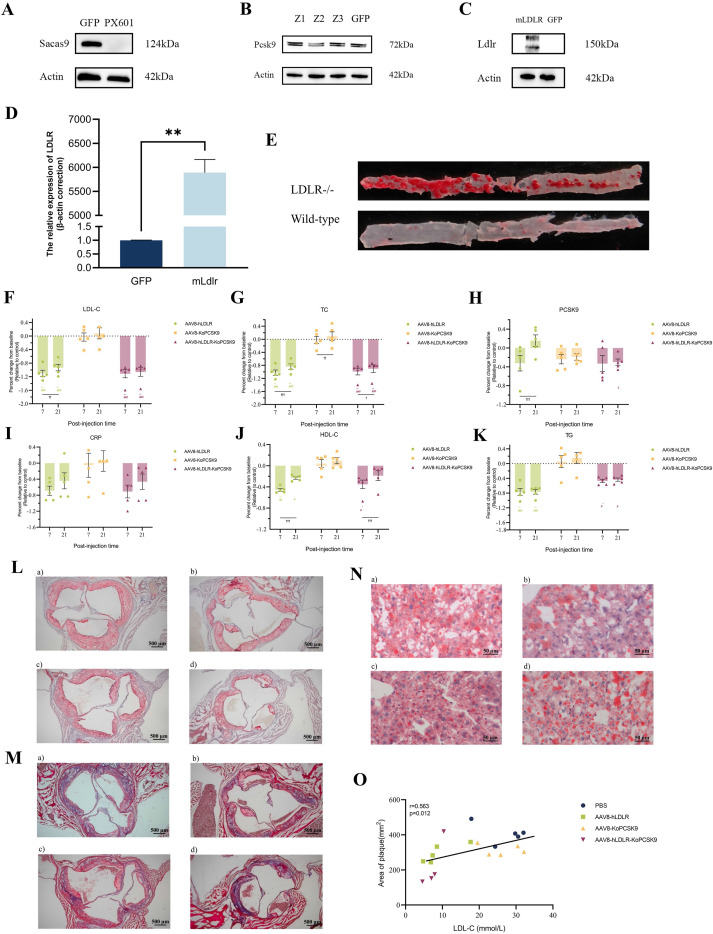
In vivo adeno-associated virus-mediated LDLR/PCSK9 intervention for familial hypercholesterolemia


Familial hypercholesterolemia is an autosomal dominant disorder characterized by a significant elevation of total cholesterol, especially low-density lipoprotein cholesterol (LDL-C).1 Mutations in the function of both LDL receptor (LDLR) and proprotein convertase subtilisin kexin 9 (PCSK9) genes are responsible for familial hypercholesterolemia.2 It is not yet clear whether the simultaneous intervention of both genes can have a synergistic effect on achieving further lipid-lowering goals. We investigated whether dual-target intervention could further reduce lipid levels and achieve improved therapeutic outcomes using adeno-associated virus (AAV) to overexpress the LDLR gene and by simultaneously performing knocking of the PCSK9 gene.
